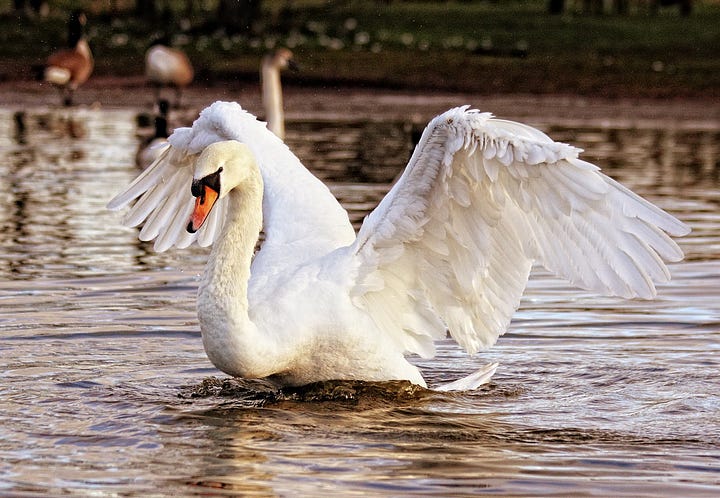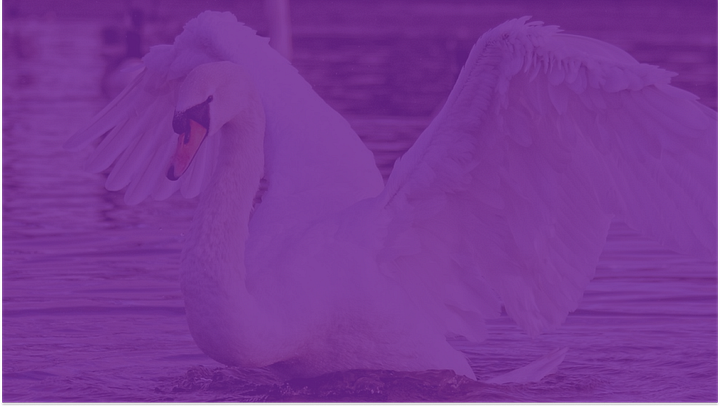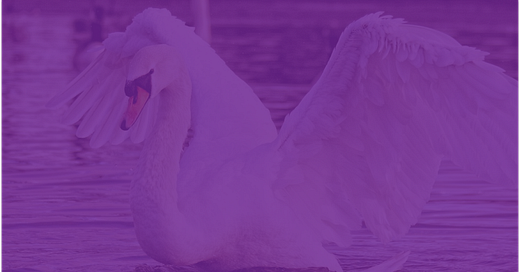It is becoming clear to me as I continue to work on restoring my health and fitness that I want to coach. I’m not there, yet. There are still some basic things I don’t understand. But I feel the desire to coach (and to learn so I can) growing within.
In this update, I want to share the path over this past week that led me here and some of my discoveries, breakthroughs, and epiphanies.
Training in a Nutshell
The Sweet and Simple
I learned something this week that helped to reveal and stoke in me this emerging desire to coach. Before diving into what I learned, I want to provide a simple way of thinking about training, including distance running training. We can sum up this way of thinking in four points:
eat right
move right
challenge the body right
rest and recover right
The Art and Craft of It
The key word in each of these pieces is “right”. Learning the right ways to do each of these four things is the art and craft of training, the path we need to travel to become masters. The beautiful thing about taking the time to learn the art and craft of training and to master it is that, by doing so, we also discover the art and craft of tending to the health and well-being of our bodies, minds, and souls.
The workout I did a couple weeks ago that set me back gave me insight into the subtleties of the training path. Each person starts from a different place and thus has different baselines and realities that they have to factor in. As is so with everything else, while principles are basic and straightforward, the path of mastering the basics is where the challenge lies. No two people are alike. No two people are starting from the same place. What works for one may well ruin another.
The Question of Pushing
When it comes to anything we can think of in life, including training, everything depends on the individual and individual circumstances. For me, two questions have come up in the wake of overtraining:
How hard do we push?
When do we push hard?
I became aware of these questions after listening to Steve Magness, a successful running coach, talk about them in one of his videos, The Optimal Intensity: How Hard Should Your Workouts Be? Magness has coached distance runners of all levels and passes on a wealth of information in his videos. He has also written a well-reviewed book, one that I have not yet read but look forward to. The book is titled The Science of Running: How to find your limit and train to maximize your performance.
Should We Do Super Hard Workouts?
In his video, Magness talks about using super hard workouts - what he calls “seeing God” workouts - sparingly, at most once or twice a year. As with every general piece of advice, individual circumstances need to be considered.
Based on my experience, for example, a person with chronic fatigue would not only not be likely to benefit from “seeing God” workouts, they would probably suffer a significant setback if they were to do them. Deconditioned athletes or people new to training after years of sedentary living would also probably not benefit from these workouts, instead experiencing a setback, their bodies overwhelmed by the recovery demands of the effort.
One other consideration that I think would be key to consider is the health of the person. While we typically equate fitness with health, the two are distinct. It is possible to be highly fit and highly unhealthy at the same time. If our fitness is built, for example, on a junk food diet, we are probably building poor health at the same time that we are building our fitness. A “seeing God” workout in such cases might well topple a person because of the underlying health issues.
Circumstances Matter
Thus, the practice of training, while simple, is also complex, just like everything else worth learning. It is this complexity that I am in the process of learning through my own practice. The fact that I have chronic fatigue, while superficially a negative, is in fact a positive for me because it is forcing me to learn these nuances.
While every good idea and every bit of wisdom is worthy, each is only useful in the right circumstances. To master training, we have to master the art of perceiving the subtleties of circumstances and understanding the practical implications of them. In other words, to master training, we have to master the art of when (or if) to apply a principle.
The Example of Breaking through Plateaus
The lightbulb moment for me in Magness’ video was when he mentioned that, in the right circumstances, “seeing God” workouts can be helpful for breaking through plateaus. There might be other reasons to include them, but that reason was the one that helped me finally get something.
Obviously, if the plateau is due to physiological burnout, these workouts would not be the answer. Sometimes, though, breaking through a plateau comes down to tweaking the stimulus. In the right circumstances, doing a “seeing God” workout might be the right tweak. Given that there are other ways to break through plateaus and the intensely taxing nature of these kinds of workouts, we might think of them as a last resort option for plateau busting.
Great Coaches Adapt
Great coaches understand that the individual and the individual circumstances before them are keys to determining what to do. As I recall reading somewhere years ago, the truly great coaches have success with athletes of all types because they recognize the need to individualize their approach to fit the athlete and also have the tools they need to do so.
Coaches who don’t recognize this need and who don’t have the tools to adapt their approach will only succeed with those athletes who happen to thrive in the training approach the coach uses. Everyone else will either fail or languish, not realizing their potential, a lose all the way around.
What My Circumstances Are Teaching Me
My circumstances are definitely unique. Right now, I can’t do most of the training that others can. But that doesn’t mean I can’t train. It means I have the opportunity to learn me (and training) and what I need (and what training truly is) from the ground up. This week, feeling a desire to coach start to emerge - something I never knew I wanted - I had the feeling of returning home - to that deep center within.
And so, in addition to learning and reconnecting with something about myself this week, I also learned a key lesson about training and coaching. Great coaches care just as much about developing the person as they do about helping people achieve their personal bests in performance. Great coaches care as much about your personal growth as they do your performance. Great coaches help you discover you.
Training Update
Currently, my body is still recovering from the workout I did a couple weeks ago. While less than optimal, I am so thankful for what I’ve learned in the wake of the experience and what it has given rise to (a desire to coach arising from it) that I’m ok with it.
Not able to do what I had hoped, I’ve taken the time to zero in further on my two main issues - my right shoulder issue and my hip weakness. While not able to do the strength work I had been doing, I have been able to explore movement and try different exercises to see what works.
Exercise Epiphany: The Body Knows
A few days ago, frustrated with the standard prehab exercises not working, I had an epiphany while exploring the Y arm exercise. This exercise and all the other standard prehab exercises you find for the shoulder have never worked for me. I understood the cues, understood that the movement should come from my scapula, not my arms, followed all the cues, and appeared to be doing them right, yet my shoulder issue never resolved. It is worth noting here that the exercises never felt good when I did them.
The Discovery
Well, then I decided to get draconian about engaging my scapula. Oh. Only then did I realize I had been leading with my arms, despite thinking I had been leading with my scapula. And only then did I understand that when you lead with your arms, your scapula won’t move right. Once I focused on my scapula, refusing to allow my arms to compensate for weakness, I finally got it. Notably, it finally felt good to do the movement, even though it was hard because of weakness.
Movement (Exercise) Is Supposed to Feel Good!
Here’s what that experience, combined with what I learned when I began incorporating David Weck’s walking/running approach to my practice, taught me: As a general rule, if we are moving the way our bodies are designed to move, it will feel good; if not, it will feel bad or off or just not good. At the very least, we can use how we feel when we move as one of our assessments as we work to restore our movement, fitness, and overall health and well-being.
Foundations, Foundations, Foundations
This experience also reinforced for me how important it is to take the time to learn proper movement mechanics and to build up and maintain strength from the ground up. While this work is not glamorous or impressive and can give rise to ridicule, it is the only way to ensure the health and well-being of our musculoskeletal system and thus our ability to move with pain-free strength and fluidity throughout our lives.
As for those who might ridicule us, they have not yet learned this basic lesson. The more solidly we have learned it, the more secure we will feel in ourselves and thus the less affected by such misunderstanding directed our way from others.
My Hips Are Finally Waking Up
As for my medial glutes (hips/pelvis), while I had succeeded in activating them when doing knee side planks, I wanted to explore other exercises that I could do in the meantime. I was especially interested in exercises that would help me continue to retrain my ability to activate my medial glutes in a foundational, progressive way.
As I explored each option, I found it challenging if not impossible to engage my medial glutes, especially on my (R) side. After trying the fourth or fifth exercise, I started feeling a little hopeless. Turning to Claude.ai for some help, I tried incorporating a band. I had not been using bands because I thought they would further overwhelm my already-overwhelmed body. Expressing my hesitation, Claude explained that the very light pressure of the band provides sensory feedback to the muscles, which helps them activate. I was skeptical, but I tried it. Sure enough, it worked!
So, while I can’t do the more advanced prehab work at the moment, I can do this more foundational work. Arguably, it is more important for me to be doing this work - physically, but also psychologically, developmentally, and spiritually - than what I had been doing. By doing it, I am providing myself with the very foundations of inner and outer strength that I have been missing.
Healing the Past
While I don’t have a specific example for my hips off the top of my head, I do have one for my scapula. Reflecting on my life, I can see that I began experiencing the effects of weakness when I was a kid climbing trees. While I spent a lot of time in trees and loved it, I was never able to pull myself up to the first branch using just my arms. Instead, I had to cheat by swinging my legs up to hook onto the branch and then pull myself up that way. I remember feeling insecure about my weakness, but I didn’t know how to fix it.
Now I do :)
Image Credit



Updates
October 27, 2024
I corrected a spelling mistake (maybe two) and made minor tweaks to a few sentences to improve them.
October 31, 2024
I changed the title from Why I Train and Why You Should, Too to Why I Train because it wasn’t sitting right with me. My philosophy is that we are all different and that the most important thing we can do for and with one another is to share what is true for us, on the one hand, and be presences and witnesses for others so they can touch into what is true for themselves. The reason to share our truths and insights is to add to the pot. When more is in the pot, there is more for others to find and consider and then compare to their own energy patterns. I believe this process helps in self-discovery. Where I believe we go wrong in this process is by presenting ourselves as the experts with the answers. My first title, while adhering to the established influencer-expert model, communicated the opposite of what I believe, what I try to practice, and the actual content of my article.
I did a little more tinkering, adding three more words. I feel they make their respective sentences better. The words are languish (in the section “Great Coaches Adapt”), fluidity (in the section “Foundations, Foundations, Foundations”, and just (in the section “Healing the Past”).



